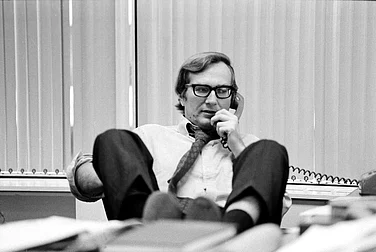I never had any special liking for ghosts or ghost stories. As a child, I was scared of both gods and ghosts. A shadow on the mosquito net would scare me just as exams would for which I would offer floral prayers to goddess Saraswati to pass them. Later, I realised that both gods and ghosts represent people’s fear of the unknown. Ghosts directly represent our fear of the unknown, while gods are supposed to protect us from the unknown. Or, perhaps, ghosts stand for the uncertainty of the unknown and gods are the sum total of the unknown.
Ghosts entered my realm of filmmaking in a strange way. I had no plans of telling a ghost story. Bhooter Bhabishyat (The Future of Ghosts, 2012) was my first feature film. While writing the script, my idea was to write a story that could be shot more or less at one location to keep the budget low—one place that could be distinctly identified as in Calcutta. With such a constraint, I needed a whole lot of characters, from varied backgrounds, to keep the viewers engaged. I did not want to tell the usual stories based on a family or on two people caught up in one place. I wanted to tell a social story, for which I needed characters from diverse socio-economic and linguistic backgrounds; even better if they belonged to different time periods. Then realisation dawned that some of them had to be ghosts. In the film now, these ghosts offer viewers a slice of Bengal’s history, along with reflections on different income groups.
ALSO READ: Horror As The Theme Of Our Lives
I was never a political creature, and always stayed away from organised politics and organised religion. The sports page is my favourite page in a newspaper. So, it’s quite strange that both my films involving ghosts were talked about for their political contexts.

In my first film, the ghosts representing different periods allowed me to make some indirect comments on recent political history. In one scene, the cameraman was delayed because of an anti-displacement agitation over Bhringigram—an obvious reference to Nandigram (the site of the real-life anti-displacement movement during 2006-08). The ghosts were also fighting their own battle against eviction from their habitat—old, dilapidated houses—but no one listened to them as they are not voters or consumers. The political references in the film were limited to such indirect commentaries. Also, I feel a deep sense of loss for old houses and the old Calcutta I grew up and lived in. One fine morning, I realised that the city is not known to me, its character has changed dramatically even though its name had not. That longing for a past I liked might have found its way while I was conceptualising the ghosts.
My second film involving ghosts, Bhabishyater Bhoot (Future Ghosts, 2019), was very different. I was very agitated about a few political issues that I wanted to speak up about. But knowing our country, instead of making a very direct political film, I took recourse to allegory and some fun elements to get the audience to the theatres. After all, I also have some responsibility in helping recover the money someone else is putting in my films. In this film, the ghosts came to my rescue in a kind and helpful way, and as in Shirshendu Mukhopadhyay’s stories, they helped me tell an outright political story in the guise of entertainment. Ghosts, indeed, offer a great scope for entertainment and metaphors.
Despite the similar titles and the presence of ghosts, this film was not a sequel to Bhooter Bhabishyat. The plot was completely different. It was clearly, as Utpal Dutt would have said, “a tool of political propaganda”. While making the film, I tried to be as funny as I could but my priority remained to say what I wanted to. There were huge hindrances during the film’s shooting. The ruling party tried to stop it by using the police, and after its release the movie was removed from theatres. There were protests on the streets, and we moved court, won the case and the film was screened again to theatres. This stress took a toll on my health, but I could not help thinking, “Well, some ghosts indeed got some powerful people scared!”
Ghosts, just like gods, hold superpowers, but they are supposed to hold evil power only. I have never liked scary ghosts and the ones in my films are not scary either. I am fond of ghosts that are friendly and helpful. The ghost Nidhiram Sardar in Mukhopadhyay’s story Gosainbaganer Bhoot is certainly my favourite ghost. The king of the ghosts in Satyajit Ray’s film, Goopy Gyne Bagha Bayn (1969), is another favourite. In Bhabishyater Bhoot, I introduced a CEO of ghosts, a direct reference to Ray’s ghost king. However, it is time CEOs rule.
(As told to Snigdhendu Bhattacharya)
ALSO READ
Anik Dutta is the Director of Bhooter Bhabishyat and bhabishyater bhoot





















